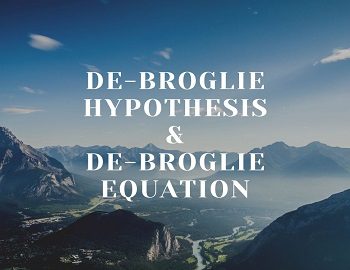Dual Nature of Radiations:
In 1856 James Clark Maxwell stated that light, X-rays, γ-rays and heat rays, etc. emit energy continuously in the form of radiation or waves and the energy is called radiant energy. These waves are associated with electric and magnetic fields, so these waves are called electromagnetic waves or radiation. These waves are associated with the following characteristics-
- They emit energy continuously in the form of radiations.
- The radiation consists of electric and magnetic field which oscillates perpendicular to each other and also to the direction of incident radiations.
- The energy associated with radiation is directly proportional to the intensity of light.
- These waves travel with the velocity of light, i.e., 3 X 108 m/sec.
- These rays do not require any material medium for propagation.
However, these radiations could explain the phenomenon like reflection, refraction, interference etc., but fail to explain two important phenomena of light like photoelectric effect and black body radiations. These two phenomena of light can be explained on the basis of particle nature of these radiations which is guided by Plank’s Quantum Theory given by Max Plank in 1904.
The main feature of this theory are as below-
- The radiant energy is emitted or absorbed discontinuously in the form of small energy packets called Quanta. In the case of light, these packets are called photons.
- The energy (E) of each Quanta is directly proportional to the frequency of the radiations, i.e., E ∝ ν; E = hν. Where ‘h’ is Plank’s constant with a value of 6.625 X 10-34 Js.
- The total amount of energy emitted or absorbed is some whole number integral multiple of frequency, i.e., hν.
Thus, in 1905, Einstein stated that radiations have a dual nature. So, light rays, γ-rays and x-rays, etc. have a dual nature.
Dual Nature of Matter:
After the discovery of dual nature, Louis de-Broglie in 1924, proposed a new idea by stating that all moving material particles (generally microscopic particles) have dual nature, i.e., wave and particle nature. However, the wave associated with matter is known as matter-wave and is different from electromagnetic waves. He correlated the two characteristics in the form of an equation known as de-Broglie equation which is-
λ = h / mV or λ = h / P
where ‘λ‘ is the wavelength of moving material object and ‘mV‘ is the momentum of a particle.









Comments (No)